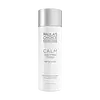What's inside
What's inside
 Key Ingredients
Key Ingredients

No key ingredients
 Benefits
Benefits

 Concerns
Concerns

 Ingredients Side-by-side
Ingredients Side-by-side

Water
Skin ConditioningGlycerin
HumectantCyclopentasiloxane
EmollientGlycereth-26
HumectantAllantoin
Skin ConditioningGenistein
Skin ConditioningCarnosine
Skin ConditioningDipotassium Glycyrrhizate
HumectantEpigallocatechin Gallate
AntioxidantGlycyrrhiza Glabra Root Extract
BleachingBoerhavia Diffusa Root Extract
Skin ProtectingCaprylic/Capric Triglyceride
MaskingDimethiconol
EmollientSodium Hyaluronate
HumectantOleic Acid
EmollientLinolenic Acid
CleansingPalmitic Acid
EmollientLinoleic Acid
CleansingPhospholipids
Skin ConditioningEpilobium Angustifolium Flower/Leaf/Stem Extract
Skin ConditioningPolysorbate 20
EmulsifyingHydrogenated Lecithin
EmulsifyingAcrylates/C10-30 Alkyl Acrylate Crosspolymer
Emulsion StabilisingXanthan Gum
EmulsifyingLaureth-4
EmulsifyingLaureth-23
CleansingSodium Hydroxide
BufferingButylene Glycol
HumectantDisodium EDTA
Ethylhexylglycerin
Skin ConditioningPhenoxyethanol
PreservativeWater, Glycerin, Cyclopentasiloxane, Glycereth-26, Allantoin, Genistein, Carnosine, Dipotassium Glycyrrhizate, Epigallocatechin Gallate, Glycyrrhiza Glabra Root Extract, Boerhavia Diffusa Root Extract, Caprylic/Capric Triglyceride, Dimethiconol, Sodium Hyaluronate, Oleic Acid, Linolenic Acid, Palmitic Acid, Linoleic Acid, Phospholipids, Epilobium Angustifolium Flower/Leaf/Stem Extract, Polysorbate 20, Hydrogenated Lecithin, Acrylates/C10-30 Alkyl Acrylate Crosspolymer, Xanthan Gum, Laureth-4, Laureth-23, Sodium Hydroxide, Butylene Glycol, Disodium EDTA, Ethylhexylglycerin, Phenoxyethanol
Water
Skin ConditioningCaprylic/Capric Triglyceride
MaskingDecyl Glucoside
CleansingGlycerin
HumectantPEG-20 Methyl Glucose Sesquistearate
EmulsifyingPPG-20 Methyl Glucose Ether
Skin ConditioningMethyl Gluceth-20
HumectantGlyceryl Stearate
EmollientStearyl Alcohol
EmollientPolyacrylamide
Camellia Oleifera Leaf
MaskingChamomilla Recutita Flower Extract
MaskingSapindus Mukorossi Peel Extract
Skin ConditioningMethyl Glucose Sesquistearate
EmollientC13-14 Isoparaffin
EmollientLaureth-7
EmulsifyingXanthan Gum
EmulsifyingDisodium EDTA
Citric Acid
BufferingCaprylyl Glycol
EmollientHexylene Glycol
EmulsifyingPhenoxyethanol
PreservativeEthylhexylglycerin
Skin ConditioningWater, Caprylic/Capric Triglyceride, Decyl Glucoside, Glycerin, PEG-20 Methyl Glucose Sesquistearate, PPG-20 Methyl Glucose Ether, Methyl Gluceth-20, Glyceryl Stearate, Stearyl Alcohol, Polyacrylamide, Camellia Oleifera Leaf, Chamomilla Recutita Flower Extract, Sapindus Mukorossi Peel Extract, Methyl Glucose Sesquistearate, C13-14 Isoparaffin, Laureth-7, Xanthan Gum, Disodium EDTA, Citric Acid, Caprylyl Glycol, Hexylene Glycol, Phenoxyethanol, Ethylhexylglycerin
 Reviews
Reviews

Ingredients Explained
These ingredients are found in both products.
Ingredients higher up in an ingredient list are typically present in a larger amount.
This ingredient is an emollient, solvent, and texture enhancer. It is considered a skin-softener by helping the skin prevent moisture loss.
It helps thicken a product's formula and makes it easier to spread by dissolving clumping compounds.
Caprylic Triglyceride is made by combining glycerin with coconut oil, forming a clear liquid.
While there is an assumption Caprylic Triglyceride can clog pores due to it being derived from coconut oil, there is no research supporting this.
Learn more about Caprylic/Capric TriglycerideDisodium EDTA plays a role in making products more stable by aiding other preservatives.
It is a chelating agent, meaning it neutralizes metal ions that may be found in a product.
Disodium EDTA is a salt of edetic acid and is found to be safe in cosmetic ingredients.
Learn more about Disodium EDTAEthylhexylglycerin (we can't pronounce this either) is commonly used as a preservative and skin softener. It is derived from glyceryl.
You might see Ethylhexylglycerin often paired with other preservatives such as phenoxyethanol. Ethylhexylglycerin has been found to increase the effectiveness of these other preservatives.
Glycerin is already naturally found in your skin. It helps moisturize and protect your skin.
A study from 2016 found glycerin to be more effective as a humectant than AHAs and hyaluronic acid.
As a humectant, it helps the skin stay hydrated by pulling moisture to your skin. The low molecular weight of glycerin allows it to pull moisture into the deeper layers of your skin.
Hydrated skin improves your skin barrier; Your skin barrier helps protect against irritants and bacteria.
Glycerin has also been found to have antimicrobial and antiviral properties. Due to these properties, glycerin is often used in wound and burn treatments.
In cosmetics, glycerin is usually derived from plants such as soybean or palm. However, it can also be sourced from animals, such as tallow or animal fat.
This ingredient is organic, colorless, odorless, and non-toxic.
Glycerin is the name for this ingredient in American English. British English uses Glycerol/Glycerine.
Learn more about GlycerinPhenoxyethanol is a preservative that has germicide, antimicrobial, and aromatic properties. Studies show that phenoxyethanol can prevent microbial growth. By itself, it has a scent that is similar to that of a rose.
It's often used in formulations along with Caprylyl Glycol to preserve the shelf life of products.
Water. It's the most common cosmetic ingredient of all. You'll usually see it at the top of ingredient lists, meaning that it makes up the largest part of the product.
So why is it so popular? Water most often acts as a solvent - this means that it helps dissolve other ingredients into the formulation.
You'll also recognize water as that liquid we all need to stay alive. If you see this, drink a glass of water. Stay hydrated!
Learn more about WaterXanthan gum is used as a stabilizer and thickener within cosmetic products. It helps give products a sticky, thick feeling - preventing them from being too runny.
On the technical side of things, xanthan gum is a polysaccharide - a combination consisting of multiple sugar molecules bonded together.
Xanthan gum is a pretty common and great ingredient. It is a natural, non-toxic, non-irritating ingredient that is also commonly used in food products.
Learn more about Xanthan Gum